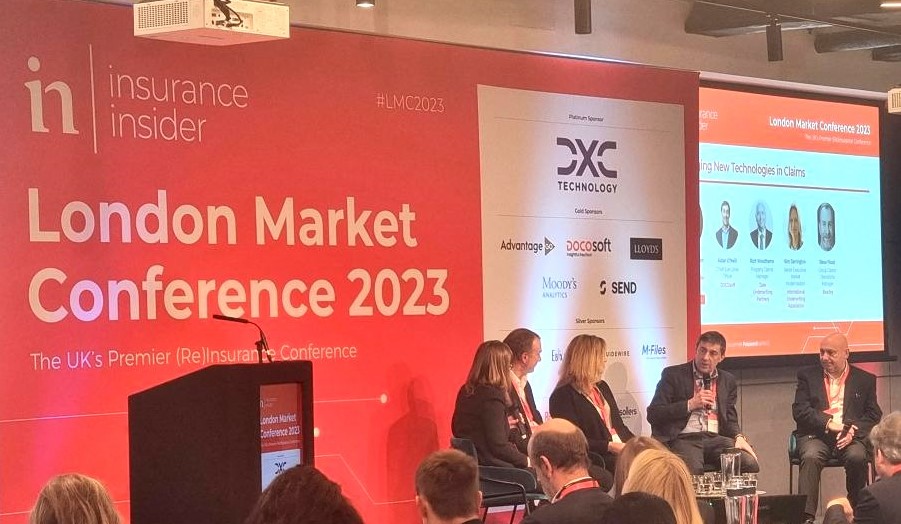DOCOsoft’s CEO speaks on the panel at the London Market Conference

At the recent Insurance Insider London Market Conference, DOCOsoft’s Aidan O’Neill was one of four panellists in a session focused on Leveraging New Technologies in Claims.
Aidan joined the IUA’s Kim Darrington, Rich Woodhams of Dale, and Steve Flood of Beazley to talk about how new technology can help (re)insurance claims teams deliver better service and gain competitive advantage.
The topics covered in a lively and insightful conversation included panellists’ thoughts on Blueprint Two and what benefits each expected it to deliver for claims teams and their customers.
The consensus was that Blueprint Two will put in place a next-generation digital architecture, into which a whole array of new technology can be plugged in future. Along with the benefits of being cloud-based, agile, secure, and more easily able to connect to external resources through standard APIs – the biggest gain they identified was gaining access to the data required to work smarter, both as individual claims teams and as a market.
Giving claims professionals the data they need, when they need it, in an easily legible and actionable form, Aidan said, will be crucially important if the market is to reap the full benefits of the coming digital transformation. The panellists agreed there is no shortage of data in the market, but also that that data is frustratingly difficult to access working with ECF.
Aidan noted that data is just numbers, new technologies like machine learning and AI have already proved their worth by turning that data into information (which explains what happened) and thence into insights (which tell us why it happened). Blueprint Two, the panellists agreed, should enable technology providers like DOCOsoft to access and harness that data at scale and unleash the full potential of AI.
There was a lengthy discussion on the issues created for claims teams by the growing prevalence of verticalized placements in the London market. Having identified reducing the claims lifecycle as a key objective for the sector going forward, panellists discussed the delays and complications verticalization can entail in the current technology environment, where each claims team effectively operates in its own siloed data environment, unable to see the bigger picture.
Rich Woodhams argued that the solution – a solution for which Blueprint Two could lay the foundations – would be for all the stakeholders on the risk to be able to see what the overall lead is doing, and then simply peer-review, adding value or insight where appropriate, but otherwise standing back and effectively allowing straight through processing.
Steve Flood endorsed this idea, adding that one of the gains to be anticipated from Blueprint Two would be the potential for developing and deploying new collaborative tools that can help all participants in the market work together more effectively and efficiently. Kim Darrington agreed, noting that Blueprint Two can help decouple process and technology, whose interdependency up to now has held back progress on both fronts.
There was some general discussion of AI, with Aidan highlighting its potential to empower claims people to focus their time, energy and skills where they add the most value. The panellists concurred that the benefits of AI significantly outweigh the potential downsides – and that fears of technology replacing human experts, with all their experience, commercial instinct, and capacity for empathy, are much overstated.
Another topic covered in the panellists’ wide-ranging conversation was the potential of Blueprint Two to help claims teams play back data on key metrics, like undervaluation, to help inform underwriting teams’ perceptions as to currently shared characteristics of risks they might not want on their books. The ability to share this kind of data promptly and comprehensibly could prove particularly valuable in these inflationary times.
